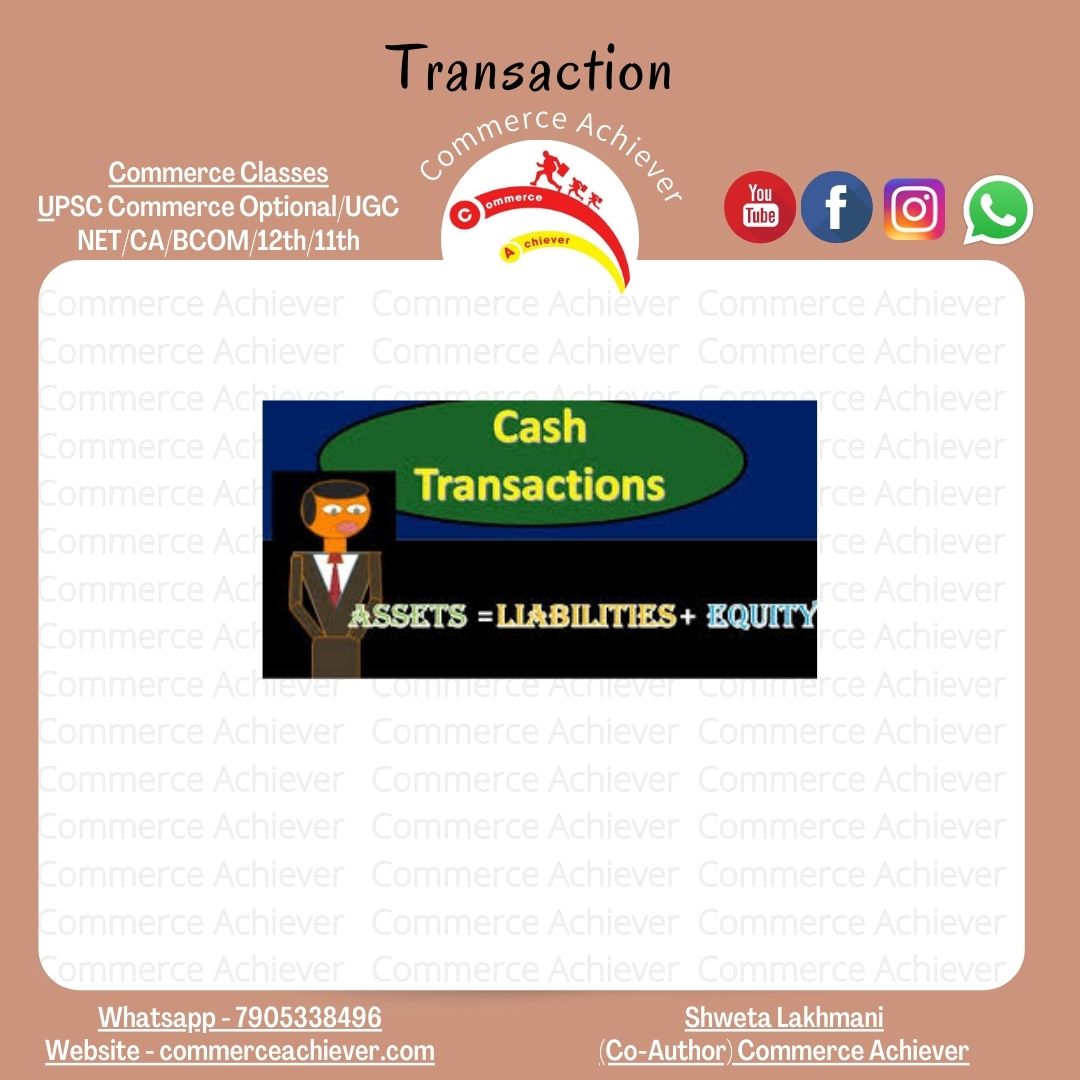
Transaction-Definition,Types. (Commerce Achiever)
Transaction is used to mean a business, performance of an act an agreement.
“Exchange of goods and Services or Exchange of money or an Agreement to exchange goods and services in future is called a financial transaction”. We can say transaction in accounting is the:
- Exchange of goods and Services, or
- Exchange of Money, or
- agreement to exchange money in future or exchange goods and services in future, or
- Interaction between a buyer and seller.
Examples of Transactions
- Sales of Goods and Services for Cash or Credit.
- Subscribing to a Netflix Premium plan (there is an interaction between you (the buyer) and Netflix (the Seller)
- Purchase of inventory on cash or credit.
- Purchase of an asset.
- Disposal of an asset.
- Payment of salaries to employees.
- Classification of Transactions
Types of Transactions
Transactions can be classified into three different categories:
- Simple and complex transactions,
- One-off and ongoing transactions, and
- Capital and revenue transactions.
We will discuss these in detail:
SIMPLE AND COMPLEX TRANSACTIONS
A transaction is simple where a buyer sells goods and services and the buyer pays for it immediately in cash. A simple transaction becomes complex when the buyer buys something in a credit or qualifies for a discount.
Example: When you purchase an AC from an electronic store and pays for it at the same time. This is a simple transaction, however, if you buy this AC on credit and agrees with the seller to pay him in installments, this transaction becomes a complex.
ONE-OFF AND ONGOING TRANSACTIONS
A transaction occurring on a single occasion is called one-off transaction. Whilst, an Ongoing transaction is a transaction of continuing nature. An ongoing transaction consists of a series of transactions.
Example: Suppose you buy a smartphone and pay for it upfront, it is a one-off transaction whilst if you subscribe to software via a monthly plane, you’re in fact incurring a series of transaction, that is what we call ongoing transactions.
CAPITAL AND REVENUE TRANSACTIONS
A transaction that has a long-term effect is called capital transactions, whilst day to day transactions are called revenue transactions. As a business, you might purchase some machinery. This machinery can be used for a long time (4-6 years), therefore such a transaction is called capital transaction. Similarly, you might purchase some inventory on a daily basis, as such transactions are incurred daily, they are called revenue transaction.
You might notice here that the classification of transactions into three types are based on different criteria such as:
Simple and complex Transactions– This classification is based on the nature of the transaction.
One-off transaction and ongoing transactions– This classification is based on the number of times a transaction is occurring. (The frequency of transaction)
Capital and Revenue transactions– this classification is made entirely on the effect that a can be derived from a particular transaction over a period of time. If a transaction has a long-term benefit, we name it as a capital transaction whilst if a transaction has a short-term benefit, we call it a revenue transaction.
Sample Equation-
Purchasing a Machine with Cash
Company XYZ wishes to purchase a 500 machine but it only has 250 of cash in its holdings. The company is allowed to purchase this machine with an initial payment of 250 but it owes the manufacturer the remaining amount. It would result in a debit to Equipment (+500), a credit to Accounts Payable (+250), and a credit to Cash (-250). The net effect on the accounting equation would be as follows:
| Assets | Liabilities | Equity |
| +500 | +250 | |
| -250 | ||
| 250 | 250 | 0 |



